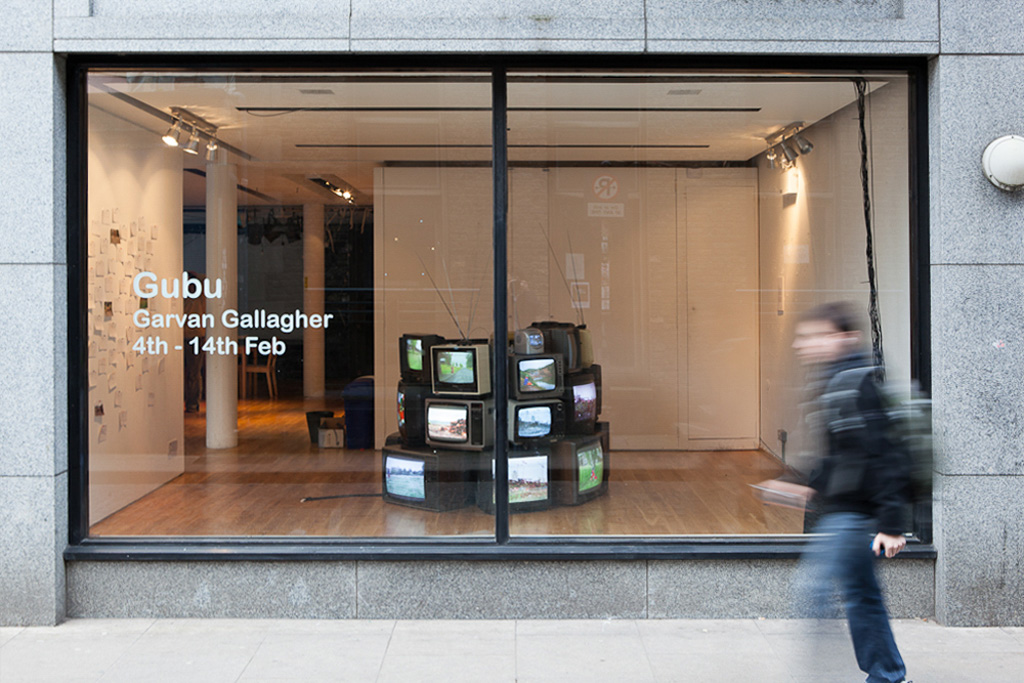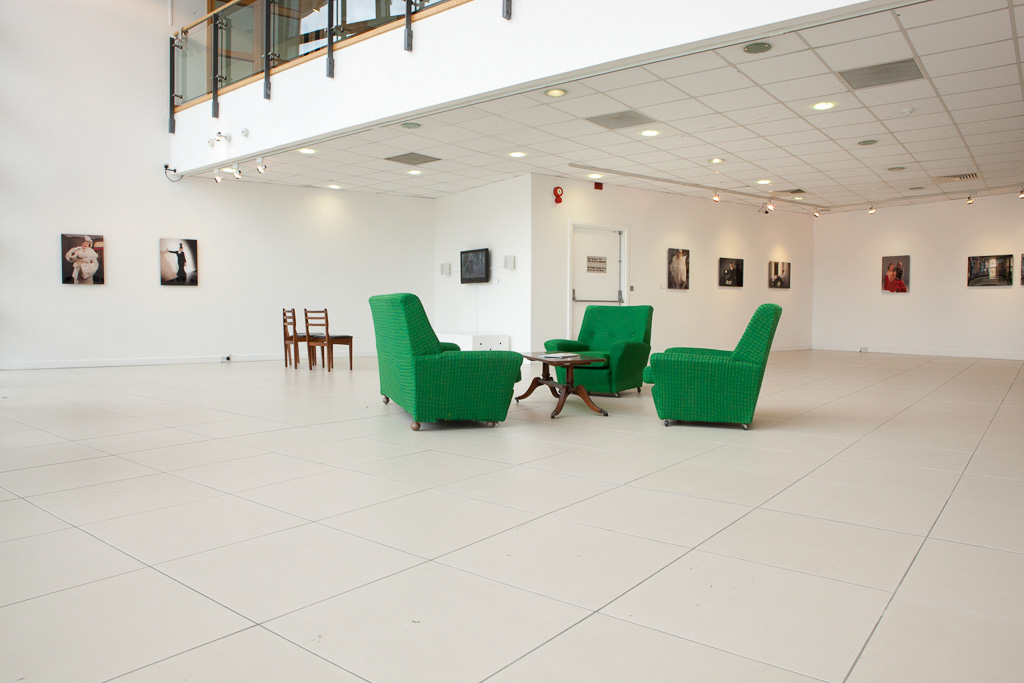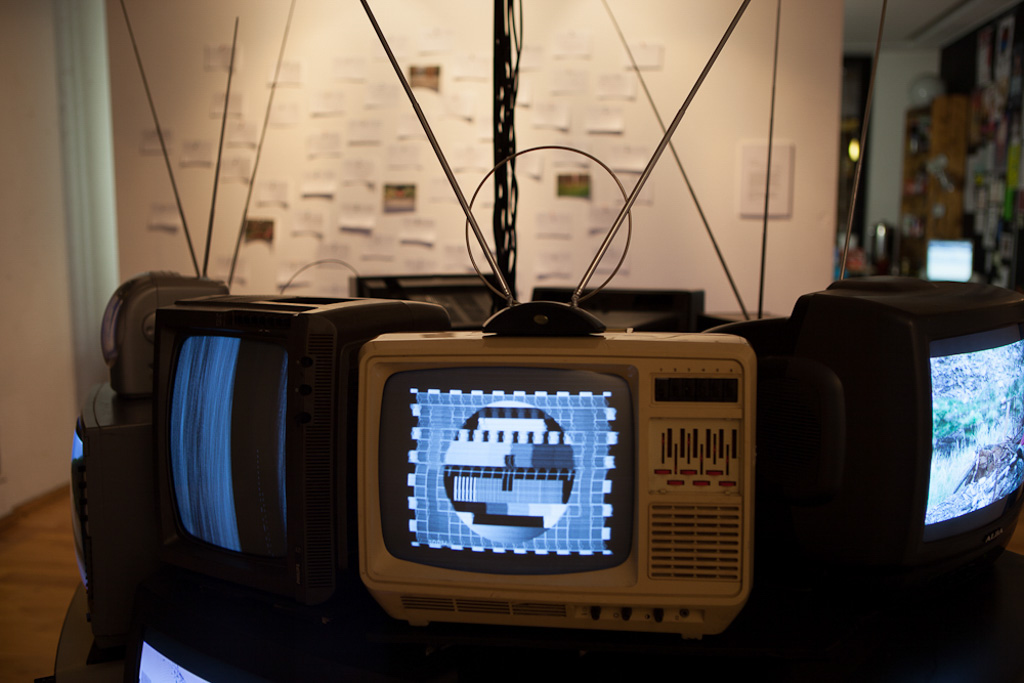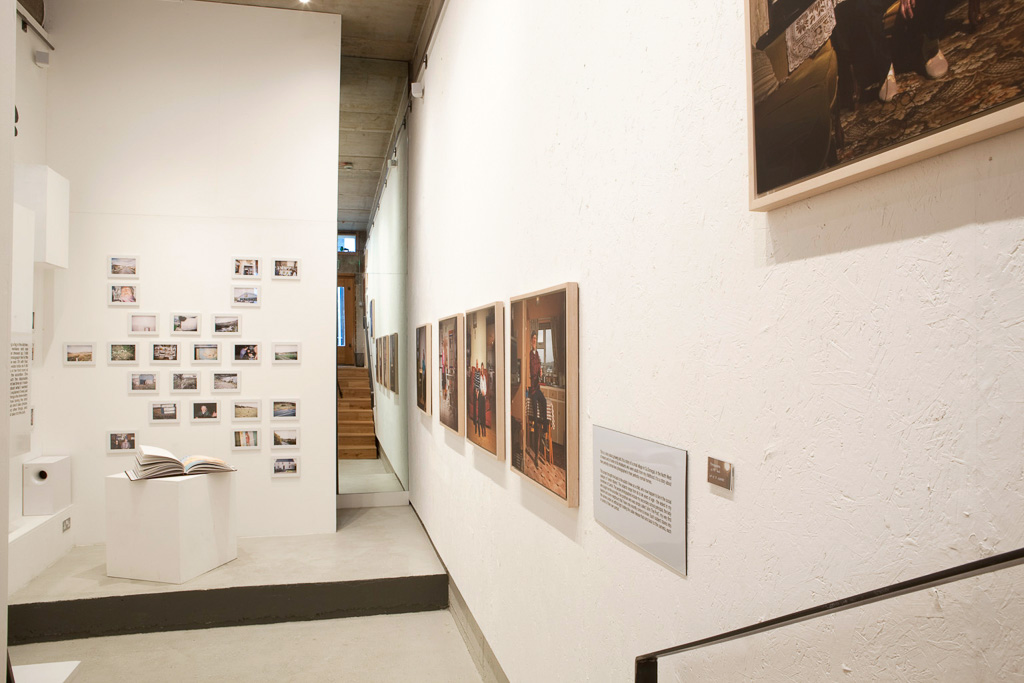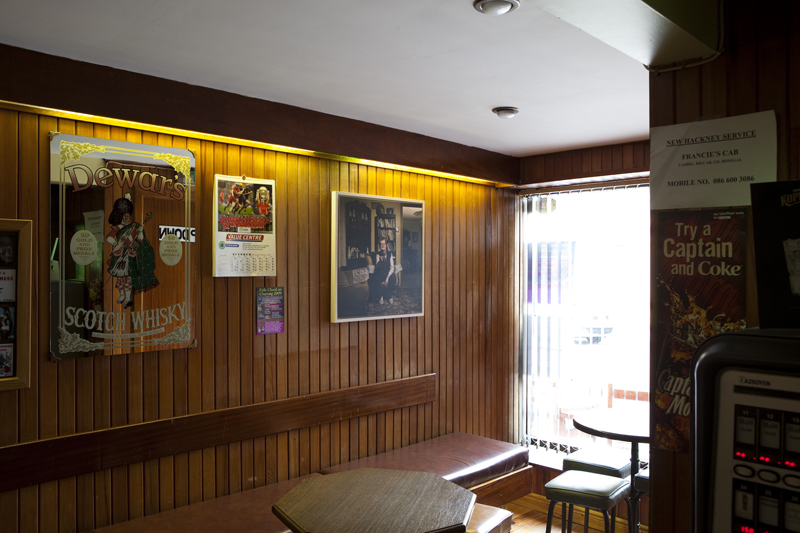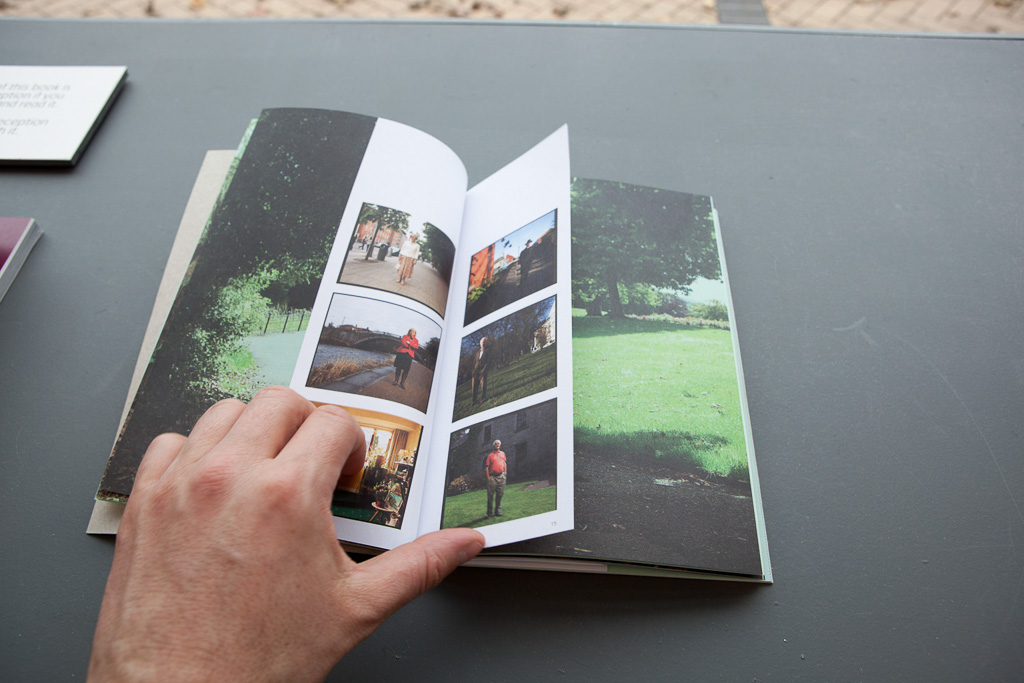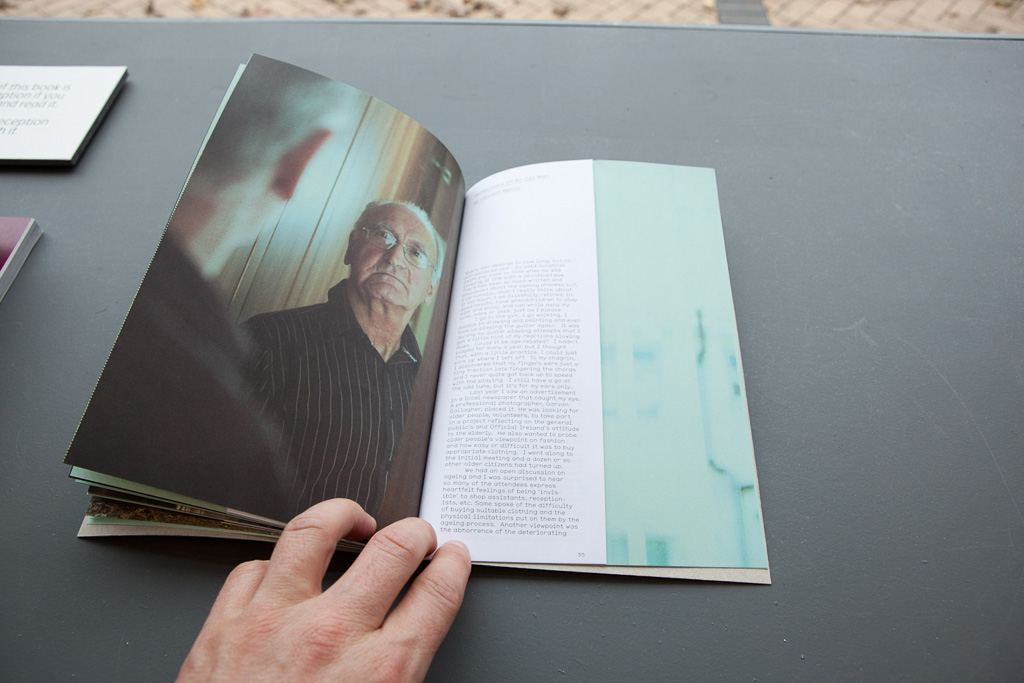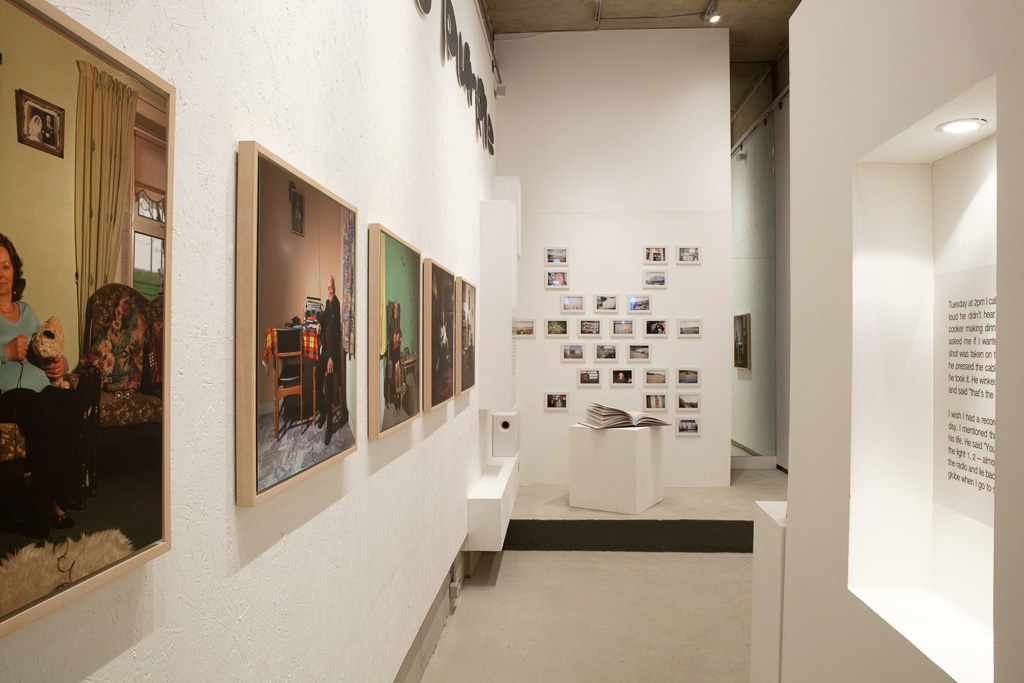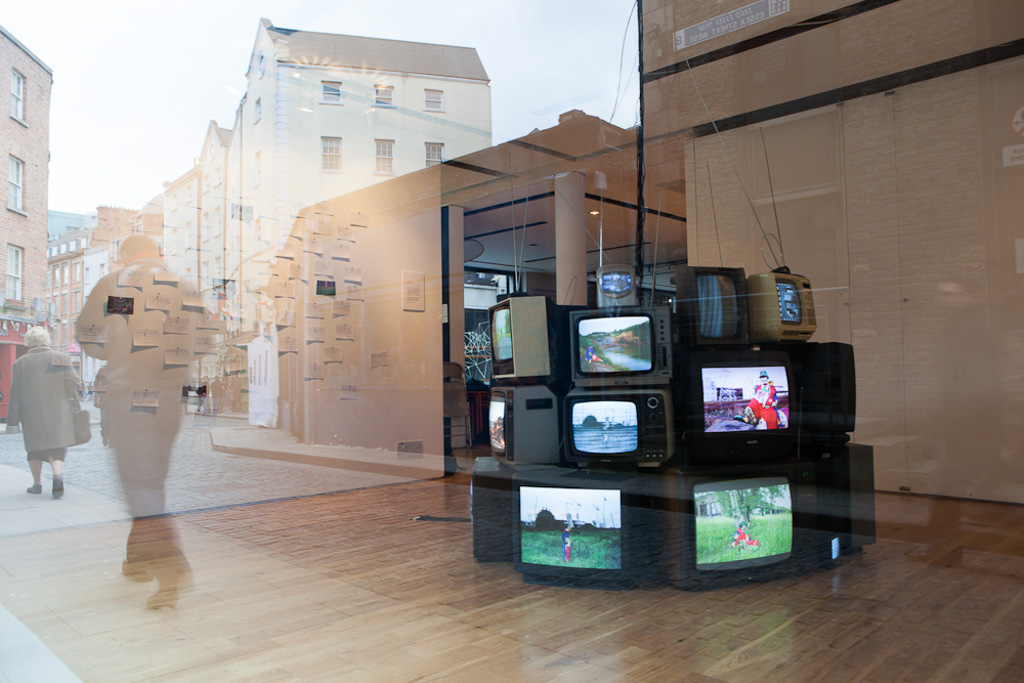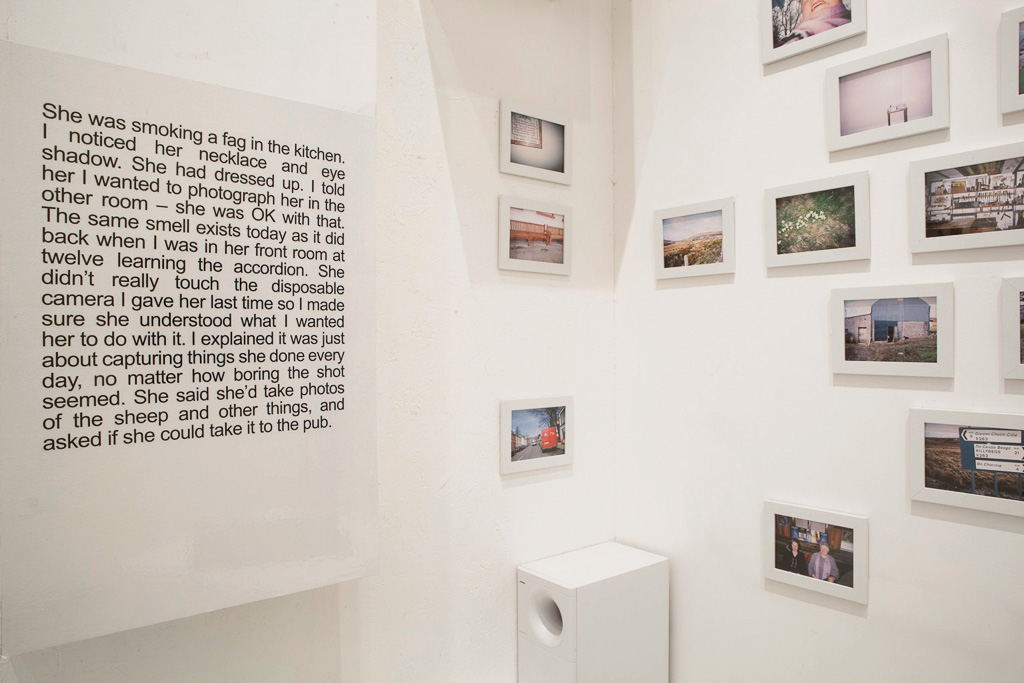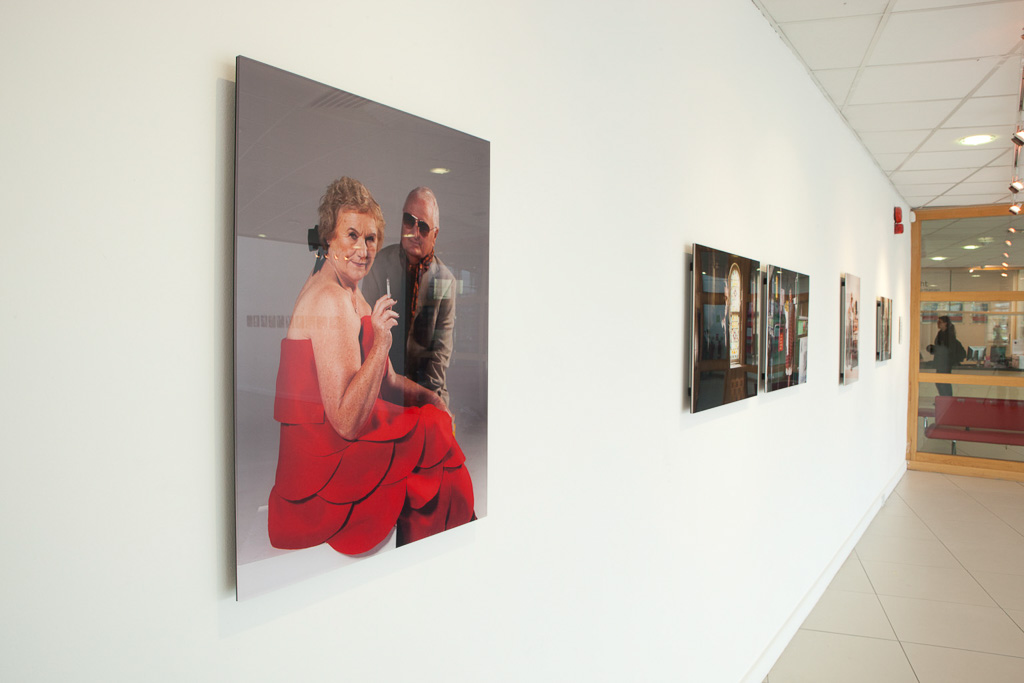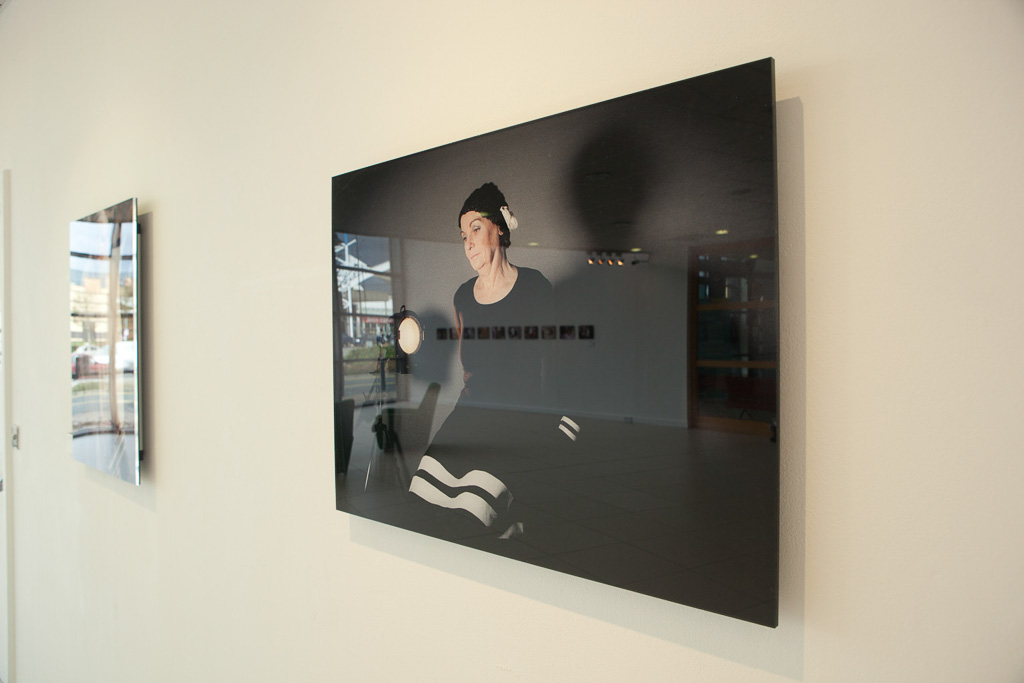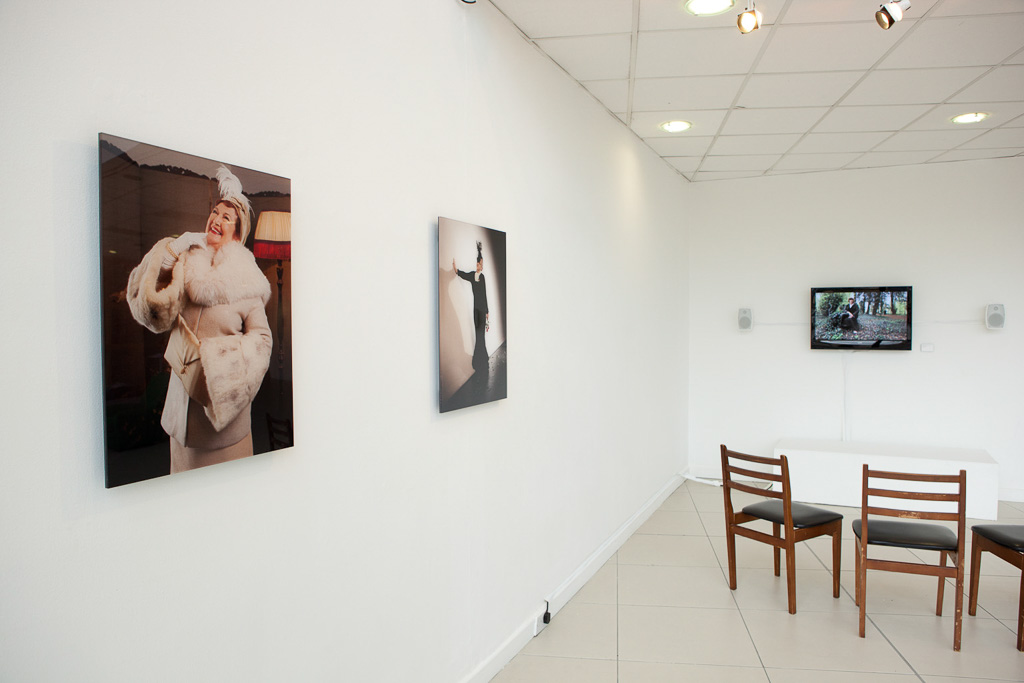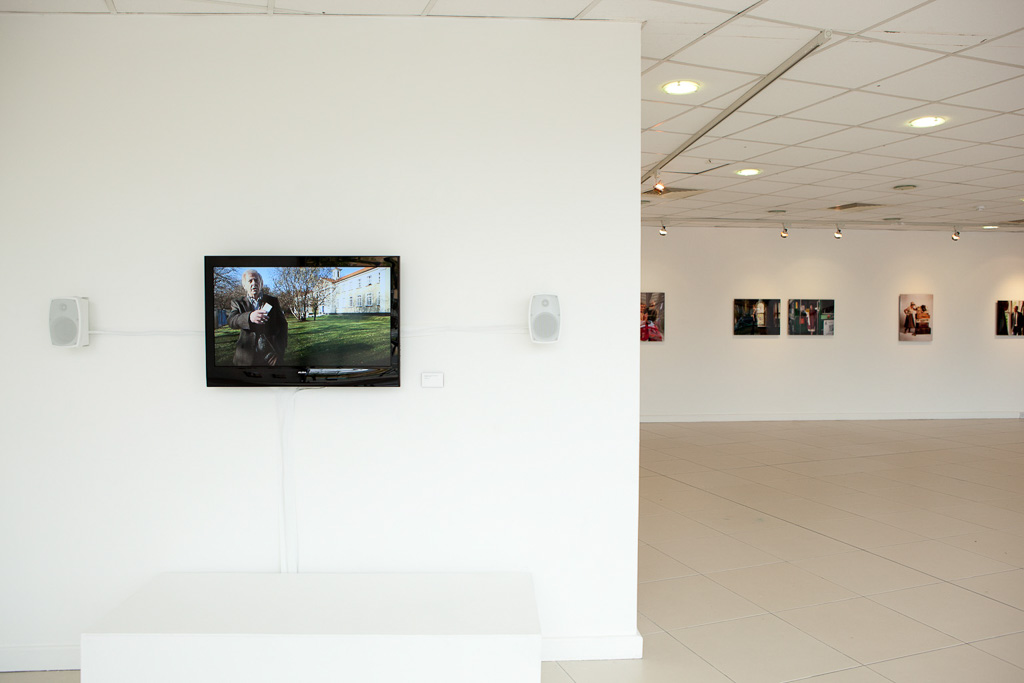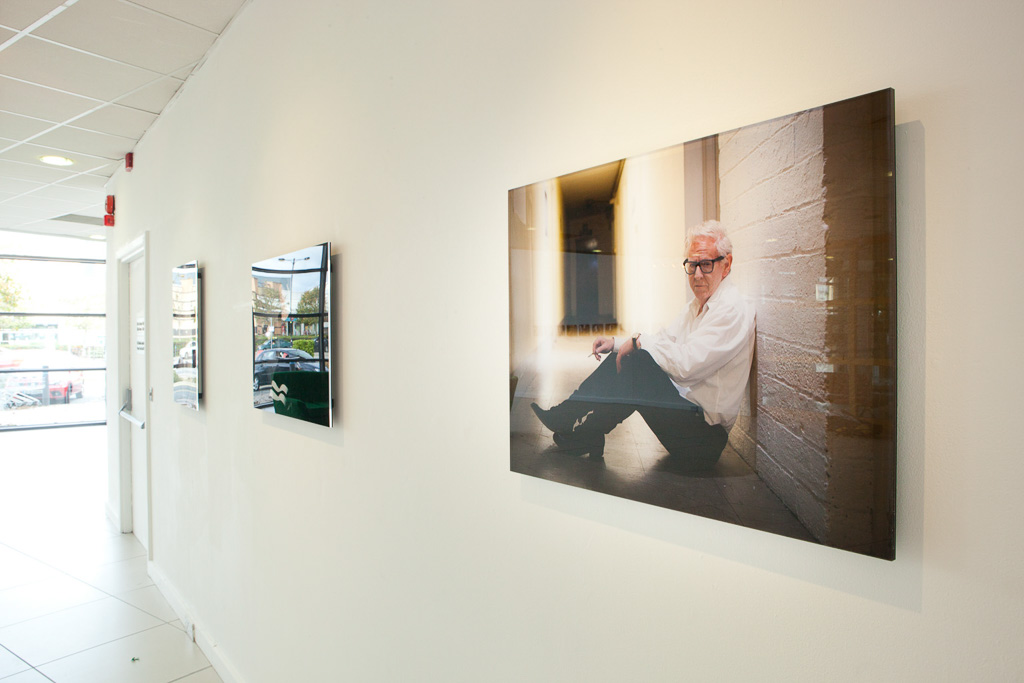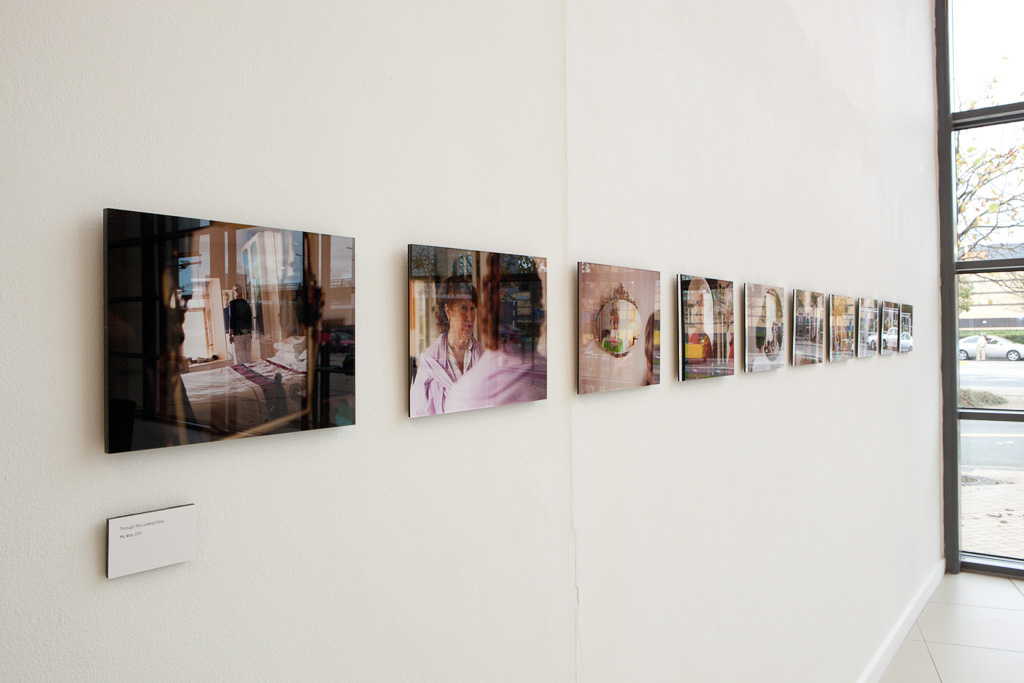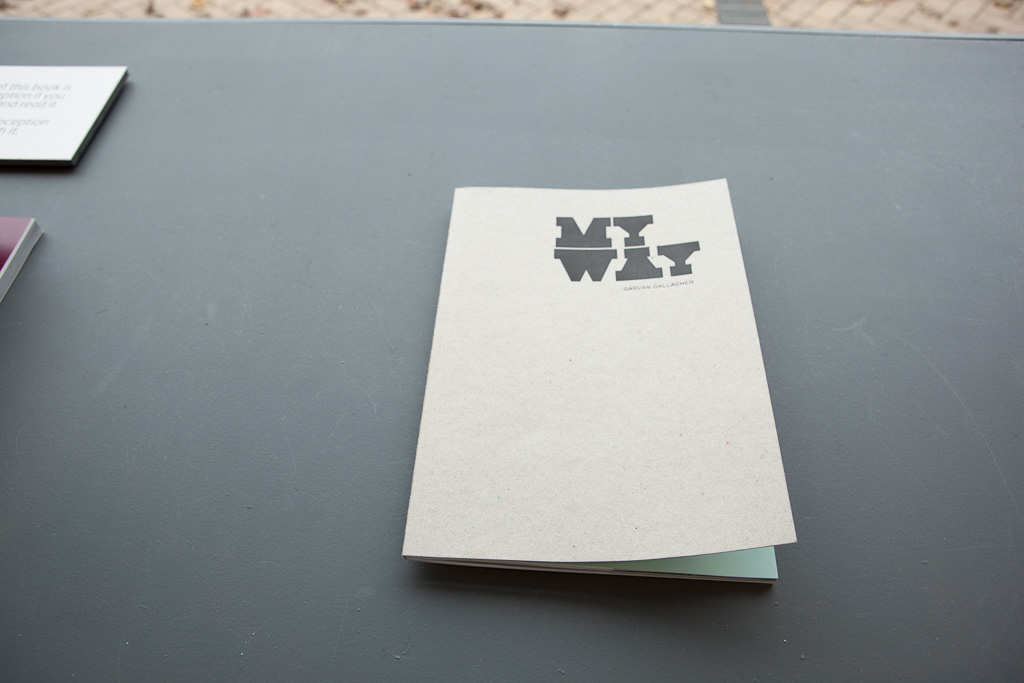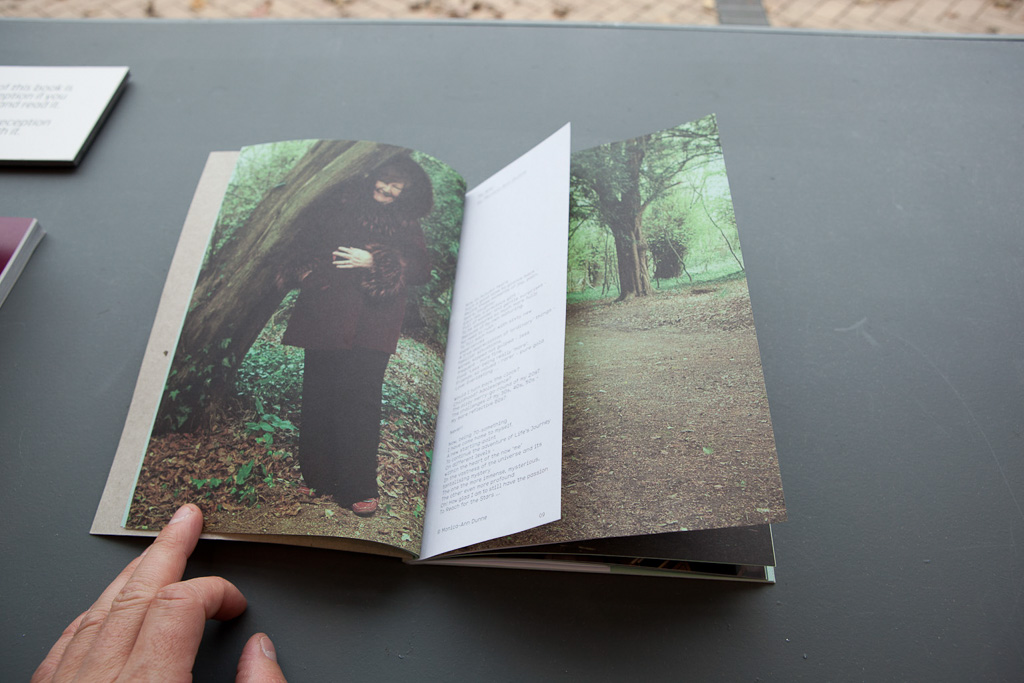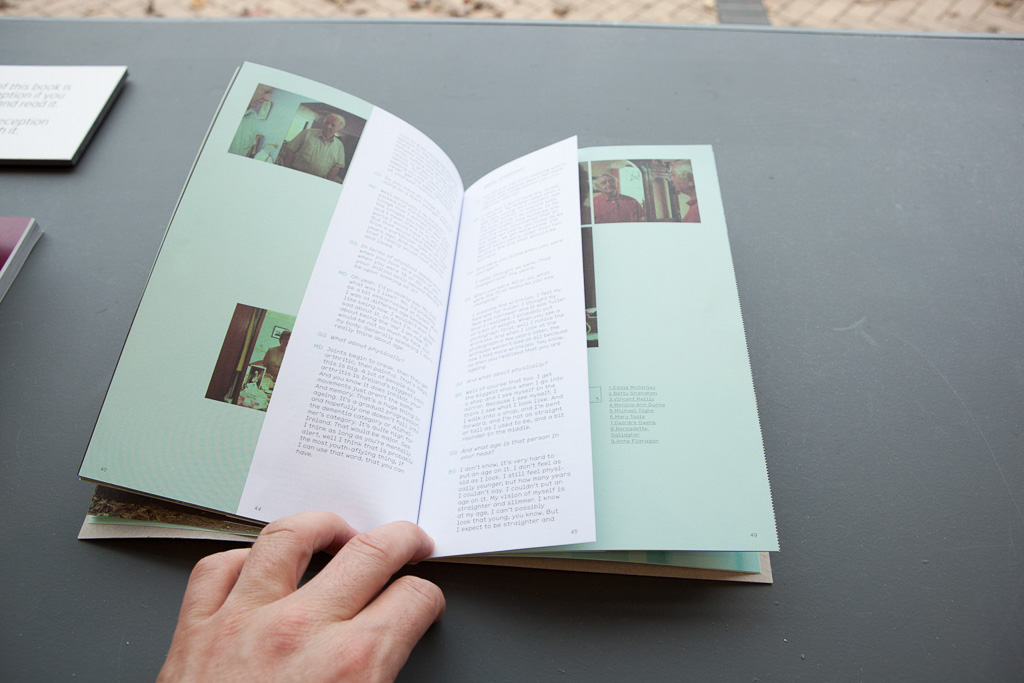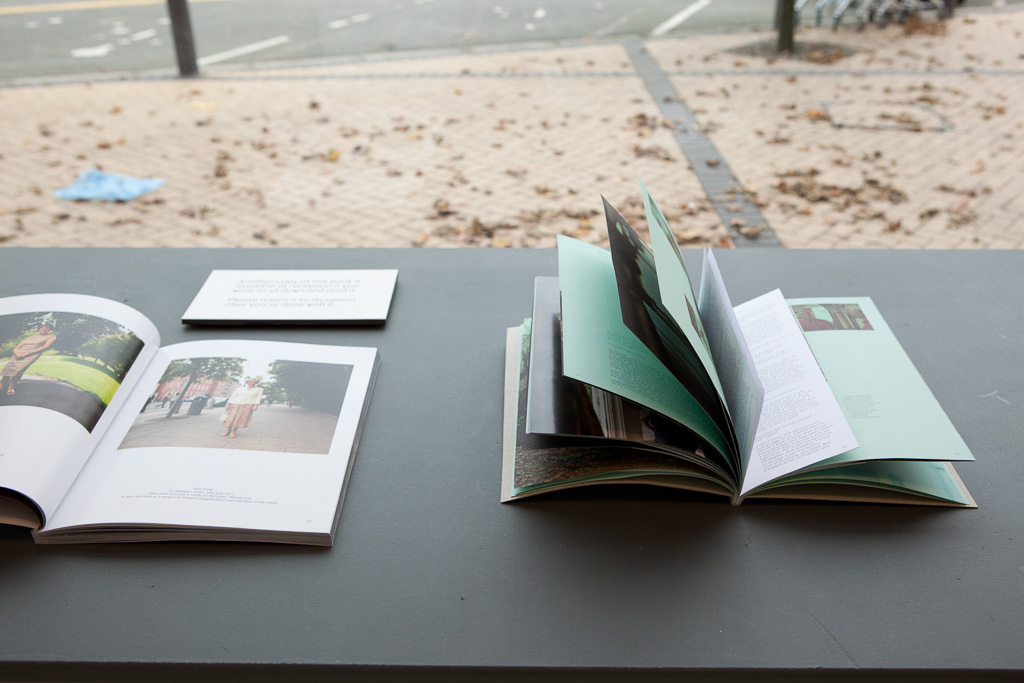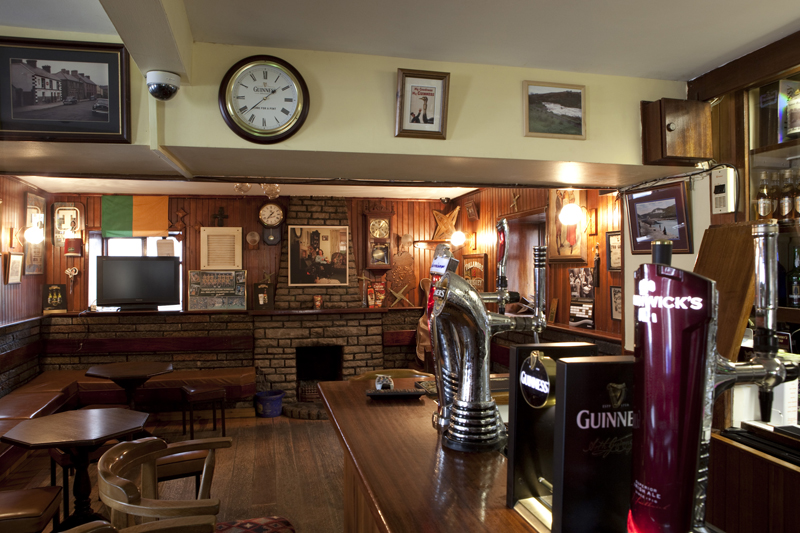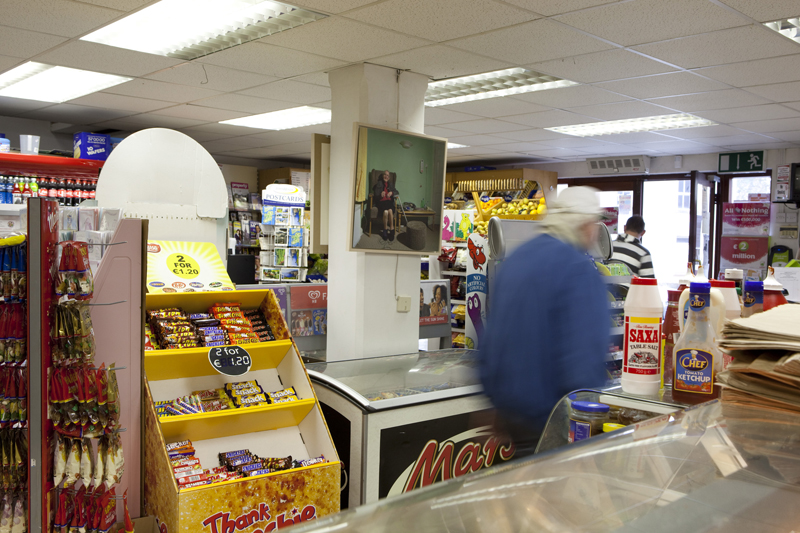Gubu at The Exchange Gallery
Three movies made for Gubu, each running approximately 6-7 minutes, was broken up into individual 1-2 minute segments, and broadcast to one of 24 old TV sets that was placed in the middle of the floor in a circle. Twenty-four soundtracks played at once, each playing random sequences from the three movies. Intermixed with the soundtrack were segments of static and the old TV Test Card.
Having to circle the chaos of TV’s and fragmented audio to view the exhibition, the viewer themselves are found in a circle of chaos, the circle unending and looping. TV test cards signified a breakdown of communication, Gubu’s ramblings signified a wider societal breakdown of communication and a shared sense of unprecedented chaos.
Wearing Purple at Clyne Gallery
The first solo show of Wearing Purple at the Clyne Gallery, as part of Bealtaine 2011. This gave me the opportunity to display, for the first time, the photographs the participants took themselves on the disposable camera given to them, along with some of my diary entries around my visits with them.
The participant photographs were displayed in a matrix style on one wall, along with interspersed pieces of text that drew attention to the process behind the work. The book that contained ethnographic detail of diary entries and background research was also on display.
MyWay at Draiocht
This show was the result of an 18 month artist residency with Draíocht, in Blanchardstown. Two out of the three photographic series made as part of this work were shown in this exhibition, along with the video piece Where Do You Think You’re Going?. The video can be found on the Video section of this site.
To give the show some context, it was important that the process behind the work was given. This was done by a process book that was on display along with a full-colour exhibition catalogue. The process book was compiled mainly from my own diary entries on the project and some background research.
Wearing Purple at Carrick
The subjects in this photographic series range from 65 to 98 years of age – the eldest in my hometown and include my secondary school principal, the lady who taught me the accordion, the postman who was simply called ‘John The Post’, my very first teacher and some neighbours that I came to know from doing this, partly autobiographical, project. I knew the participants of this project would most likely not travel to see it in a gallery. It was an important therefore to bring it back home, to give back.
As part of Bealtaine 2009, a festival celebrating creativity in older people, I had the opportunity to do just that. Rather than exhibiting the images in one location, they were instead exhibited in public premises all over the town. Exhibiting the portraits this way meant that the public encountered the exhibition in a very casual way, much like they would encounter the very people that are photographed. Some hung in the local bars, some in the local shop, the butcher and community day care centre over the course of two weeks.

